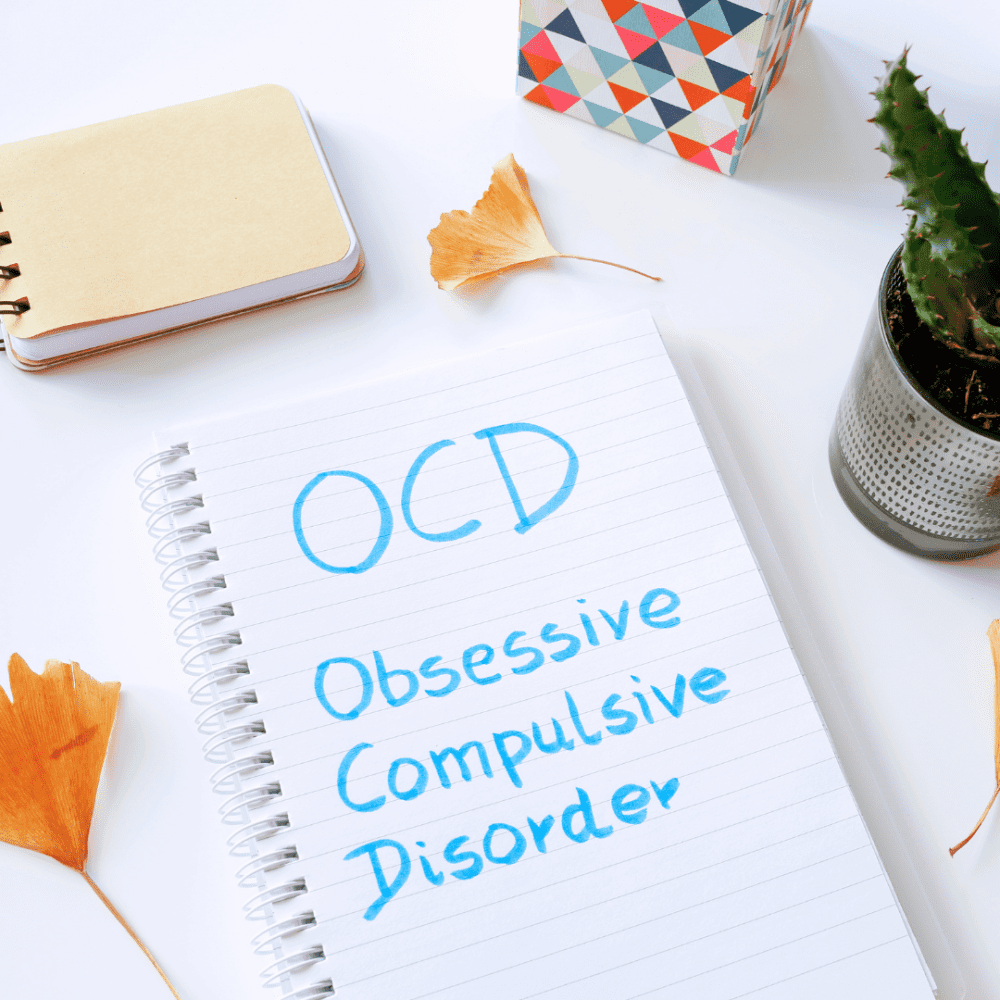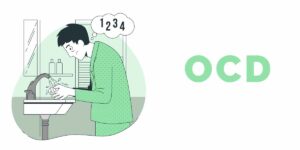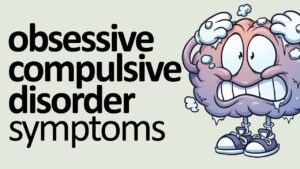Do you know what OCD is? Many people don’t, but it’s more common than you might think. In this blog post, we will discuss all of the important facts about OCD. We will cover what OCD is, what causes it, and how to treat it. If you or someone you know struggles with OCD, then this blog post is for you!
Contents
- 1 What Is OCD?
- 2 What Are OCD Facts?
- 2.1 OCD Is a Persistent Mental Disorder
- 2.2
- 2.3 OCD can create extreme stress and anxiety
- 2.4 Many people with OCD have insight into their symptoms
- 2.5 People of all ages are prone to this problem
- 2.6 The typical OCD signs begin in adolescence and early adulthood
- 2.7 No single OCD gene has been found yet
- 2.8 A blood test or X-ray can’t detect OCD
- 2.9 There are several professional treatments available
- 3
- 4 Conclusion
What Is OCD?

Obsessive-Compulsive Disorder, or OCD, is a mental disorder that affects millions of people around the world. It is characterized by persistent and unwanted thoughts (obsessions) and/or repetitive behaviors (compulsions).
People with OCD may have difficulty functioning in their daily lives due to their obsessions and compulsions.
Obsessions are persistent and unwanted thoughts, images, or urges that cause anxiety or distress. Common obsessions include fear of contamination, excessive hand-washing or cleaning; fear of losing things; and the need for symmetry or order.
Compulsions are repetitive behaviors or mental acts that a person feels compelled to do to relieve anxiety or distress. Common compulsions include hand-washing and cleaning, checking things, repeating certain words or phrases, and counting.
What Are OCD Facts?
There exist many OCD facts which you need to be aware of. Some of the most common OCD facts are:
OCD Is a Persistent Mental Disorder
OCD is a mental disorder that is characterized by persistent and intrusive thoughts, emotions, or behaviors. People with OCD may have difficulty completing daily tasks or may be unable to function normally in social situations. OCD can severely impact a person’s quality of life. Symptoms of OCD can include:
- Excessive hand-washing or cleaning: People may feel the need to wash their hands or clean their surroundings constantly to prevent germs from spreading.
- Avoidance of certain objects or situations: people tend to avoid anything that might trigger their OCD symptoms. The reason is that they fear that exposure to the trigger will lead to more obsessive thoughts or compulsions.
- Repeatedly checking things (e.g., locks, ovens): People with OCD may feel the need to check things repeatedly to make sure they are safe. There exist various reasons for this. For example, someone with OCD may worry about leaving the oven on and causing a fire. This may lead them to check the oven multiple times before leaving the house.
- Arranging objects in a precise order: Some people with OCD may have compulsions related to arranging objects in a certain order. This could involve organizing books on a shelf from lightest to darkest or alphabetically. This may also include making sure all the labels on canned goods are facing the same direction. As a result, people may spend a lot of time arranging and rearranging objects.
- Counting or repeating certain words or phrases: People with OCD may have compulsions that involve counting or repeating certain words or phrases. For example, they may feel the need to count how many steps they take while walking or repeat a certain word multiple times. This can be time-consuming and prevent people from completing tasks on time.
- Hoarding: Some people with OCD may have a compulsion to hoard objects. They may feel the need to save everything they come across, even if it has no value. As a result, their homes may become cluttered and difficult to live in. In severe cases, hoarding can lead to dangerous and unsanitary living conditions.
Hence, OCD can cause significant distress and disruption in a person’s life.
OCD can create extreme stress and anxiety 
Obsessive-compulsive disorder (OCD) can be a debilitating condition that causes extreme stress and anxiety. People with OCD often have repetitive, intrusive thoughts (obsessions) that lead them to engage in behaviors (compulsions) to try to relieve the anxiety.
These compulsions can be extremely time-consuming and disruptive, and they may even be dangerous. For example, someone with OCD might have an obsession with germs and contamination, which leads them to compulsively wash their hands or clean their house.
This can lead to severe skin irritation, as well as missed work or school due to the time spent on these activities. In some cases, people with OCD engage in self-destructive compulsions, such as compulsive hair pulling or skin picking. These behaviors can cause serious physical harm and emotional distress.
Many people with OCD have insight into their symptoms
Many people with OCD are aware that their thoughts and behaviors are irrational, but they feel powerless to stop them. This can lead to a great deal of distress. For example, someone with OCD may know that it doesn’t make sense to check the stove 50 times before leaving the house, but they can’t help doing it anyway.
This type of OCD is called “obsessive thinking” or “rumination.” It’s characterized by intrusive, unwanted thoughts or images that are hard to shake. These obsessions can be about anything, but some common themes include:
- Fear of contamination or germs
- Excessive concern about neatness and orderliness
- Intrusive sexual or violent thoughts
- Unwanted intrusive thoughts about religion or morality
- Excessive concern about making mistakes
People with OCD may try to “neutralize” their obsessions by performing compulsions, or repetitive behaviors. For example, someone who is afraid of contamination may wash their hands over and over again. Someone worried about making mistakes may check and recheck their work obsessively.
These compulsions provide temporary relief from anxiety, but they ultimately make the OCD worse. That’s because they reinforce the underlying belief that the person with OCD is in danger.
People of all ages are prone to this problem
OCD is a mental health disorder that affects people of all ages and backgrounds. The most common age of onset for OCD is between the ages of eight and twelve, but it can occur at any age. Teenagers and adolescents may suffer from OCD due to hormonal changes and the stress of growing up. Adults with OCD may have had the disorder since childhood, or they may develop OCD later in life.
Many adults only develop symptoms of OCD in adulthood. Adults may develop OCD after going through a major life change, such as getting married or having a baby. Senior citizens may develop OCD due to the changes in their bodies and brain brought on by aging.
The typical OCD signs begin in adolescence and early adulthood
Most people with OCD experience their symptoms during adolescence and young adulthood. This is the time when many people are going through major changes in their lives, such as starting a new job or going to college. These changes can trigger OCD symptoms or make them worse. For example, if you’re worried about making friends at a new school, you may start compulsively washing your hands to ease your anxiety.
During adolescence, many individuals with OCD start to experience symptoms related to symmetry and orderliness. For instance, they may spend an excessive amount of time making sure their clothes are perfectly aligned or that all the books on their shelves are arranged in a certain way.
This need for symmetry and orderliness can be so strong that it interferes with daily activities and relationships. As early adulthood arrives, new responsibilities and changes can amplify these symptoms. For example, young adults with OCD may become so focused on keeping their workspace clean and organized that they spend less time socializing with co-workers.
No single OCD gene has been found yet
One of the most interesting facts about OCD is that no single OCD gene has been found yet. This means that there is not one specific cause for OCD, but rather a combination of several factors that may contribute to its development.
There are various reasons for this. Firstly, OCD is a complex disorder and involves many different brain regions and neurotransmitters. Secondly, there are many different types of OCD, with differing symptoms. This means that there is not likely to be just one gene responsible for the disorder.
A blood test or X-ray can’t detect OCD
OCD is a mental disorder that causes people to have repetitive, uncontrollable thoughts and behaviors.
The reason is very simple. OCD is a mental disorder that causes people to have repetitive, uncontrollable thoughts and behaviors. A blood test or X-ray can’t detect OCD, because it’s not a physical illness. Instead, OCD is a psychological condition that requires treatment from a mental health professional.
OCD can be treated with medication and therapy. If you think you might have OCD, talk to your doctor or mental health professional. They can help you get the treatment you need.
There are several professional treatments available
Several effective treatments are available for managing and recovering from OCD. There are many different types of therapies and medications that can help manage and recover from OCD. These include:
- Cognitive behavioral therapy (CBT): The most common and effective treatment for OCD is Cognitive Behavioral Therapy. CBT works by helping the individual to change their thinking patterns and behaviors that contribute to their OCD. This is a type of therapy that helps to change the way you think and behave.
- Exposure and response prevention (ERP): Exposure and Response Prevention (ERP) is another effective treatment for OCD. ERP works by gradually exposing the individual to their fears and anxiety triggers while teaching them healthy coping mechanisms to manage their anxiety. This is a type of CBT that involves exposure to the things that trigger your OCD symptoms, without allowing you to engage in your usual compulsions or avoidance behaviors.
- Psychotherapy: This is a type of therapy that involves talking about your thoughts, feelings, and behaviors with a therapist. It can be used to treat many different mental health conditions, including OCD.
- Medication: Medication can also be an effective treatment for OCD, particularly when used in conjunction with CBT or ERP. SSRIs are the most commonly prescribed medication for OCD, as they are effective in reducing symptoms of anxiety and depression. Several types of medication help treat OCD, including antidepressants, anti-anxiety medications, and antipsychotics.
If you or someone you know is struggling with OCD, please reach out to a mental health professional for help. There is hope and recovery is possible.
Helping yourself can reduce your OCD signs

Self-care is essential for managing any chronic condition, and that includes OCD. While there is no cure for OCD, these self-care tips may help lessen symptoms and give you a better quality of life:
- Identify your triggers: what sets off your OCD? Once you know what triggers your obsessions or compulsions, you can start to avoid those situations or deal with them differently.
- Create a routine: having a set routine can help reduce anxiety and provide a sense of structure. This could involve setting aside time each day to do things that make you feel good, such as reading, listening to music, or spending time outdoors.
- Challenge your thoughts: instead of succumbing to your compulsions, try to challenge them. This could mean facing your fears head-on or testing out what happens if you don’t do your compulsions.
- Talk to someone: talking to a therapist or counselor can help you understand your OCD and develop healthy coping mechanisms. They can also provide support and guidance when things are tough.
- Support groups: There are many support groups available for people with OCD, as well as their family and friends. These can provide valuable information, support, and advice.
While these tips may not eliminate OCD symptoms, they can help make them more manageable so that you can live a fuller life. If you’re struggling to cope with OCD, don’t hesitate to reach out for professional help.
It is possible to enjoy a productive life with OCD
There is often a misconception that people with OCD are unable to lead happy and successful lives. This couldn’t be further from the truth. While OCD can be a very debilitating condition, it is possible to live a complete and productive life with the disorder.
Many famous people have been open about their battle with OCD. For example, David Beckham, Howie Mandel, and Charlize Theron have all spoken about their experiences with the disorder. This helps to break down the stigma surrounding mental illness and show that people with OCD can be successful and happy.
If you or someone you know is struggling with OCD, remember that there is hope. With proper treatment, it is possible to live a full and happy life. With good coping mechanisms and treatments in place, you can live a happy and productive life.
Conclusion
OCD facts are essential for people who want to know about this mental disorder. There are different types of OCD, and each type has its own set of symptoms. The most common type of OCD is called “contamination obsessions”, which is characterized by fears of germs and dirt. While other types include “checking compulsions”, “hoarding”, and “rumination”.
It is noted that OCD is not just about being tidy or clean. People with OCD often have very high standards of cleanliness, but they can’t control their thoughts or behaviors. OCD can be treated with medication and therapy.
If you think you might have OCD, talk to your doctor or mental health professional. With professional treatment, self-help strategies can be very effective in managing OCD. After all, the more we know about OCD, the better we can understand and support those who suffer from it.
Professional Guidance is the first step to moving toward your healing journey. You can try reaching Therapy Mantra to seek expert help in the comfort of your own home. Our therapists will help you get a solution to manage and overcome your problem. You can book your online therapy and talk directly to your assigned mentor. You may also download our free OCD treatment app on Android or iOS.







